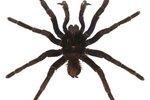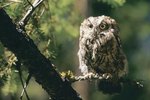
True to their names, rainbow bee-eaters (Merops ornatus) eat bees and are colorful, with green, blue, red, yellow and black markings. Distributed across much of Australia and eastern parts of Indonesia, rainbow bee-eaters thrive across a range of habitats, including mangroves, sandy pastures, forests near lakes or rivers, and arable land. Certain adaptations help them to get by in their natural environment.
Flying Skills
Rainbow bee-eaters are extremely fast and deft fliers. These speedy aeronauts can be seen twisting and turning on a dime while in flight. Their extreme speed and maneuverability in the air mean they can easily pursue and catch their prey, which includes creatures such as bees, wasps, damselflies, dragonflies and other flying insects.
Eating Prey
Although rainbow bee-eaters consume a range of flying insects, their diet primarily consists of bees and wasps. In order to eat them without getting stung, they've adapted a special way of devouring their prey: Once they've caught a wasp or bee in their beaks, they return to a perch and whack the bug's head against the perch to stun it. They then grab the tip of the abdomen in their beaks and crush the stinger to release the venom, rendering their meal safe to eat.
Digging Nests
During mating season, male and female rainbow bee-eaters form monogamous bonds to breed and raise their chicks together. Rather than nesting in trees, these birds nest in burrows of between 3 and 10 feet long. The pair -- and often an extra male helper -- work together using their long, pointed beaks and their taloned feet to dig this burrow for nesting. Although they may return to the same nesting site the following year, a mating pair always dig a new burrow.
Avoiding Predation
Rainbow bee-eaters are at risk from a range of predators, including dingoes and monitor lizards. As such, they've adapted a couple of behaviors to help avoid predation. When threatened, they'll engage in mobbing behavior -- emitting an alarm call and flying directly at the potential predator. This may start with one or two birds but can escalate so a whole flock is mobbing the predator. They also tend to nest in colonies of up to 50 pairs. It has been found that predation decreases as colony size increases. It is another adaption for deterring potential threats.
References
Photo Credits
-
Jupiterimages/Photos.com/Getty Images



